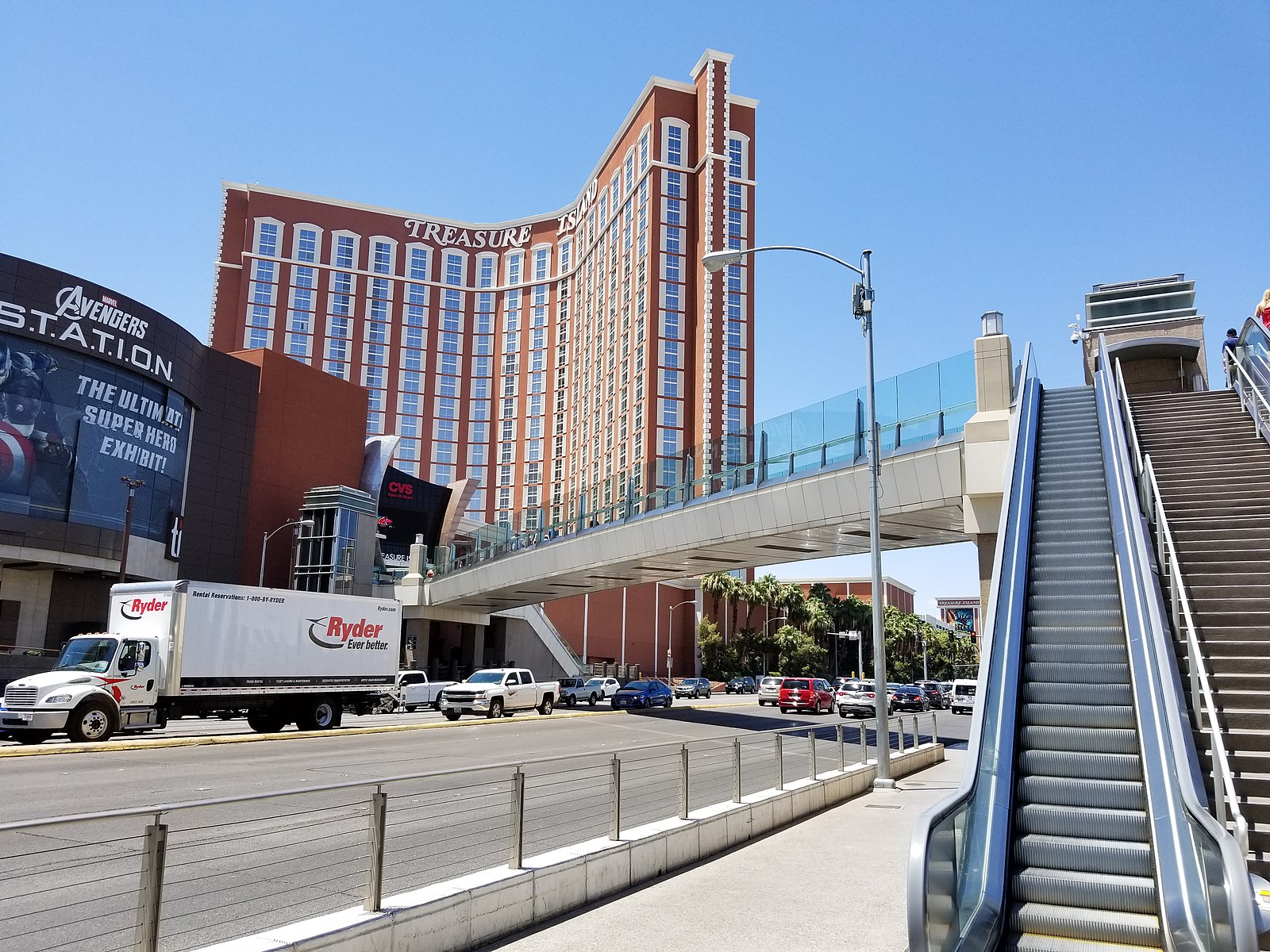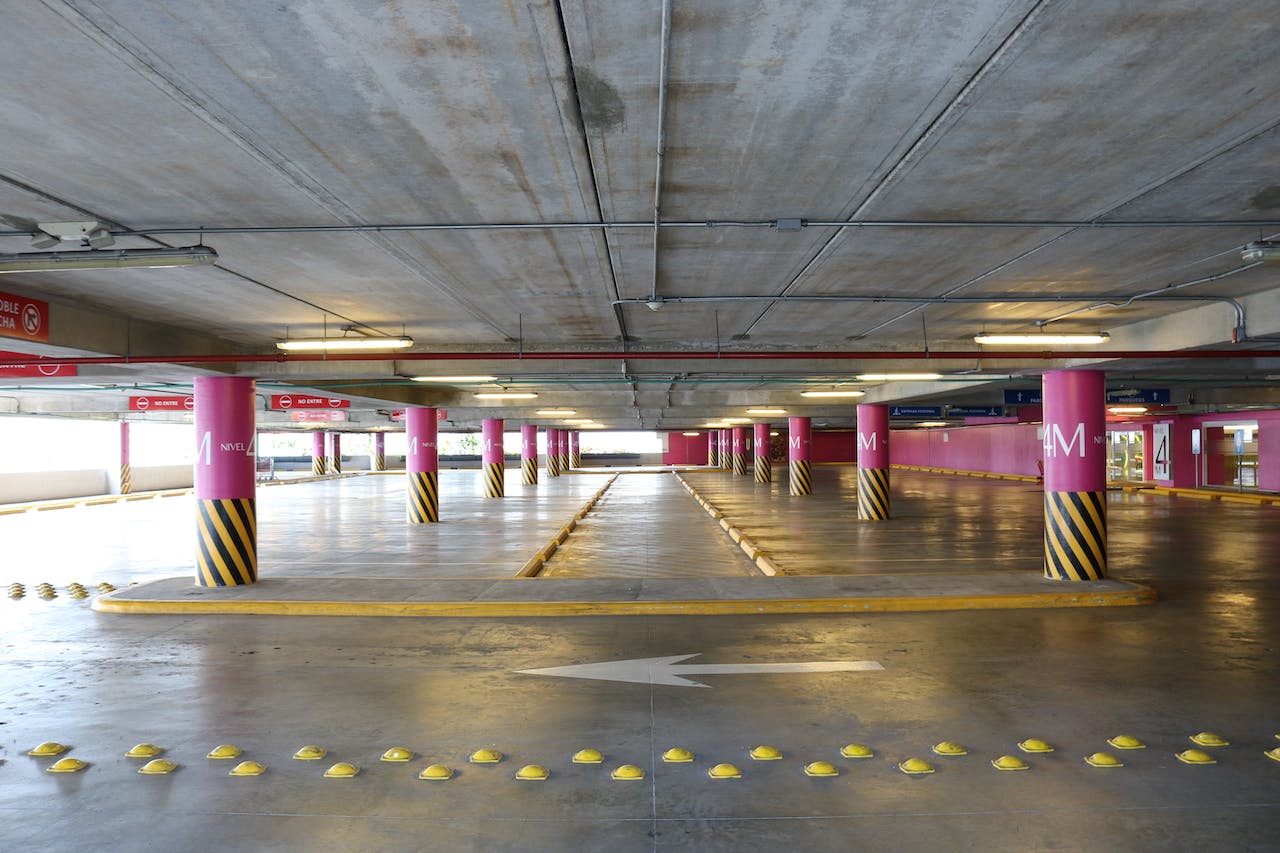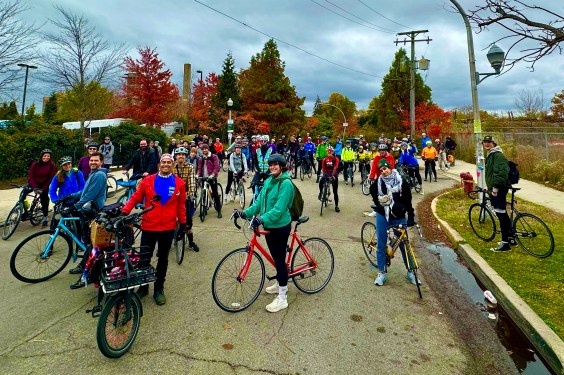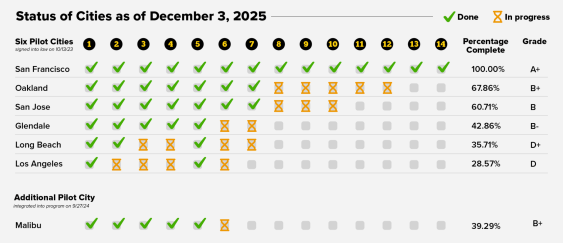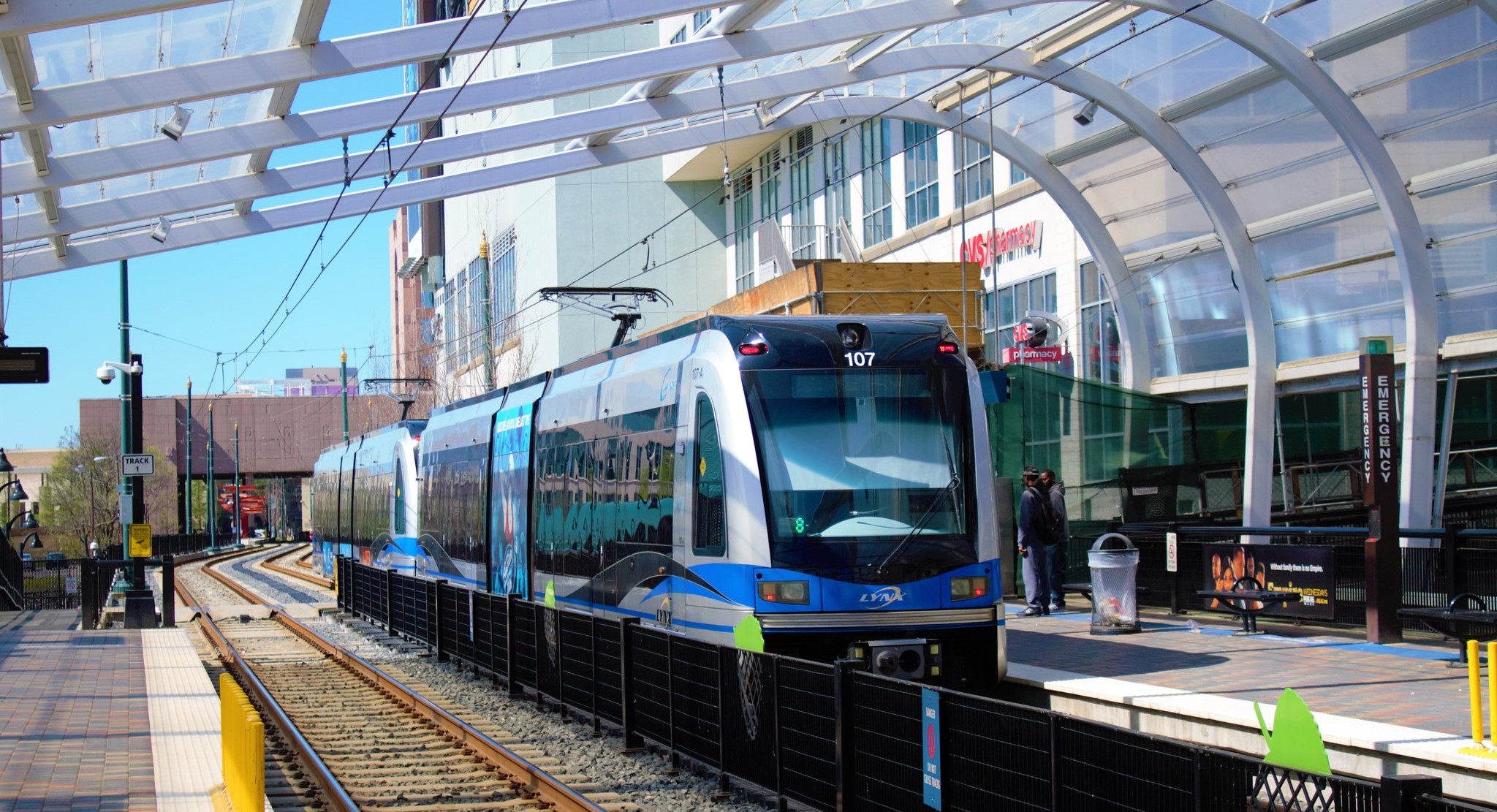The U.S. Department of Transportation rolled out its third and final round of Reconnecting Communities Pilot Program grants on Jan. 10, awarding $544.6 million in grants for 81 projects in 31 states. The grants, part of the Biden administration’s final acts on transportation, came just before the incoming Trump administration upended federal grantmaking and tried to freeze funding across the federal government.
While the Trump administration’s policy changes, desire to revoke funding and preference for highway expansion will certainly impact the program, taking stock of the US DOT’s first program specifically dedicated to reconnecting communities is critical in evaluating its legacy.
The program has funded notable successes in planning and capital grants for transformative projects to reconnect divided neighborhoods. However, many funded projects focused on mitigation rather than addressing the root causes of our transportation system’s impact on equity, climate, community health, and multi-modal connectivity.
Who Got Reconnecting Communities Grants?
The US DOT funded 257 projects across 47 states, Puerto Rico, and Washington D.C., awarding $185 million in 2022, $3.3 billion in 2023, and $544 million in 2024 to exhaust the program's funds.
Reconnecting Communities dollars went largely to disadvantaged communities, with 88 percent of grants and 95 percent of funding supporting these areas. Rural and tribal communities received less funding than urban communities, with only 15 percent of projects and five percent of funding in rural communities.
Funding was split between planning grants and capital grants, with regional partnerships awarded through the Neighborhood Access and Equity program in 2023. Planning grants, capped at $2 million each, made up the largest share of grants with 177 projects. Capital grants, which varied widely in size, accounted for approximately 94 percent of the total funding distributed.
| Round | Total Applicants | Total Planning Grant Recipients | Total Capital Recipients | Total Regional Partnership Recipients* | Award Success Rate | Award Amount |
| FY 2022 | 414 | 39 | 6 | 0 | 10.8% | $185m |
| FY 2023 | 682 | 72 | 51 | 8 | 19.2% | $3.3B |
| FY 2024 | 403 | 66 | 15 | 0 | 20% | $544.6m |
New York received the most funding of any state or territory with $581 million to support some of RCN’s most transformative projects. These included a $181 million capital grant in 2023 to support the I-81 Connecting Syracuse Project that will remove a stretch of urban freeway in the city, as well as $100 million to remove the second stretch of the inner loop freeway in Rochester, one of the country’s most successful highway removal cases to date. A 2023 grant for New Rochelle’s conversion of Memorial Highway into a linear park also pushed the envelope.
Oregon received the second highest share of funding at $494 million across the three grant rounds, but Oregon’s story shows how some states and cities prioritized expanding the same infrastructures whose impacts Reconnecting Communities grants sought to mitigate. The Oregon DOT’s $450 million capital grant – the single largest award across all three grant years – supports a project to cap I-5 in Portland while expanding the highway beneath it. Essentially, the State DOT leveraged reconnecting communities dollars to unlock additional funding for highway expansions, sidestepping the grant’s original intent. Projects in Denver and Austin follow a similar playbook.
Other states including Massachusetts, California, Texas, Georgia, and Florida all received over $200 million in funding for various projects. Three states — North Dakota, South Dakota, and New Hampshire — had no awarded projects.
Local governments received the most awards, accounting for nearly 60 percent of funded projects. States, largely through various departments of transportation, received 12.5 percent of grants, and nonprofits received 10.5 percent.
What kinds of projects did the Reconnecting Communities Program Fund?
The Reconnecting Communities program’s stated goals – facilitating community reconnection to right historic and ongoing harms brought by infrastructure decisions – can be interpreted in a wide variety of ways by applicants. This fuzzy definition allowed for a range of projects, some that are truly transformative investments in reconnecting communities, while others amount to business as usual investment.
Highway Caps and Land Bridges ~$1.2 Billion
Projects to plan or implement land bridge projects received the largest share of RCN funding at nearly $1.2 billion.
In 2024, additional projects joined efforts in Portland, Austin, Denver, and other communities. The West Baltimore United Construction Phase 1 project received $85 million in capital funding, with another project in Cleveland receiving $69 million in funding that some say is aimed more at retaining an NFL team than reconnecting a disadvantaged community.
These mitigation projects seem to be seen as a silver bullet that "reconnect" communities while allowing freeways to stay intact, without dramatically changing mobility patterns for drivers. However, these infrastructures leave states and cities with two expensive maintenance burdens: costly highways and the bridges that span across them. It will be interesting to track these projects once they are implemented to see how their promises hold up to reality. Some, like in Denver, are already receiving mixed reviews.
Pedestrian and Bike Infrastructures ~ $587 Million
Projects that specifically invested in planning or constructing multi-use trails (~$420 million) and bike and pedestrian bridges (~$150 million) were also numerous. These measures increase connectivity for those who rely on active transportation for mobility and reconnect recreation areas. The Emerald Trail: Reconnecting and Revitalizing Jacksonville’s Urban Neighborhoods project received the largest award in this category, with $147 million to support engagement, planning, design, and construction of a multi-modal trail and linear park through a community divided by I-95.
Transit ~$500 million
Transit projects– mainly Bus Rapid Transit (BRT) – had the next highest share of funding. This included a $102 million grant to the Niagara Frontier Transportation Authority (NFTA), $69 million to the Central Puget Sound Regional Transit Authority, and $41 million to the Central Ohio Transit Authority, all capital grants to implement BRT projects.
Other projects included much needed track modernization along the Chicago’s Blue Line Forest Park Branch and a regional partnership in L.A. County to expand affordable, equitable, and safe multimodal connections to support Metro’s 2028 vision.
Investing in transit through dedicated bus lanes and improved stops and stations increase reliable connectivity through fast, frequent, and affordable transit options.
Street Redesign ~$420 million
Unsurprisingly, the nitty gritty of street design and complete streets projects were also a large share of RCN grants. Some of the most innovative complete streets grants funded the $29 million capital grant for the Riverfront Infrastructure Vitality and Equity Restoration in East Toledo, Ohio that funded a laundry list of complete streets improvements, and a Houston, Texas project that received $43 million for sidewalk improvements in several disadvantaged communities.
Highway, Ramp, or Street Removal ~ $403 million
Proposals to remove highways, ramps, or streets were among the RCN program’s most potentially transformative grant proposals. Along the capital grants, Syracuse and Rochester New York, and Somerville, Massachusetts picked up the largest capital awards in this category, leading the nation in reparative reconnection projects that boldly rethink infrastructure.
On the planning side, Minnesota had several innovative projects– including the Duluth I-35: Community Access Revitalization Study to remove a stretch of I-35. Bring Back 6th, an effort by my team at Our Streets – a Minnesota based nonprofit – was also awarded a planning grant. Other projects like Reconnecting MacArthur Park and the National City/Southeast San Diego Greenspace Corridor Project also pushed the envelope.
Parks and Greenspace ~$206 million
Parks and greenspace improvements were the primary goal of several projects. The largest of such awards was a $117 million capital grant to New York City Department of Parks and Recreation QueensWay: Forest Park Pass project that will repurpose an approximately 0.7-mile stretch of abandoned railway into a linear park. New Rochelle, New York’s highway to linear park proposal also puts a ~$16 million grant to work in one of the RCN grant’s most compelling projects.
Several projects, notably the Connecting Miami: I-395 Underdeck and Heritage Trail, including building park space beneath highway infrastructures as well.
Transportation Planning/ Studies ~$158 million
Another unsurprising category is funding towards open-ended studies to figure out how to address infrastructures that divide communities, including by highways, other roads, rail, and other barriers.
Other Projects ~$500 million
A variety of other projects made the list, including a border crossing, port improvements, and other projects that didn’t neatly fit into another category.
What's next for Reconnecting Communities?
The end of the Reconnecting Communities Pilot Program signals the need for further investment in similar initiatives through future federal, state, and local efforts. The program exceeded demand for funding in all three years, and many other impactful projects went unfunded. Future policies must continue to fund these efforts and connect existing planning recipients with capital funding to implement their projects.
In the meantime, the Reconnecting Communities Institute (RCI) aims to provide wraparound technical assistance to communities navigating grants and community reconnection projects, and the thriving communities program will do the same – as long as federal funding keeps flowing. At the state level, some DOTs – notably Caltrans – have started reconnection programs of their own, and more states should follow. Some nonprofits, like Smart Growth America, have also created programs to support these efforts.
Future success in reconnecting communities will require more than federal funding, though. It demands a fundamental shift in how we approach investing in transportation infrastructure through state and federal DOT reform. And our new federal posture on infrastructure won’t bring this needed change for the next four years, leaving states, cities, philanthropies, and nonprofits a gap to fill in innovating infrastructure approaches.
The Trump Administration’s desire to pause on federal grantmaking also raises concerns for applicants struggling to access already-allocated funding. This also applies to other competitive transportation grants like RAISE – which Project 2025 suggests eliminating – and other funding from Biden’s two keystone infrastructure bills. The full impact of these moves remains uncertain.
Even amidst this chaos, though, it's worth pausing to examine Biden’s legacy on transportation, which Transportation for America described as leaving status quo "largely unchanged, though it is far better funded." Reconnecting Communities could be a bright spot in that legacy, by identifying infrastructure that creates barriers to mobility and prioritizing resources to address those barriers and their impacts.
How we reconnect our communities does matter. Projects that don’t rethink the way we provision infrastructures won’t have as big of an impact on improving the way our communities live, work and access daily needs. As more cities and states witness the benefits of truly rethinking harmful infrastructures and investing in connecting communities and cities, the benefits of such reforms will only become more clear.
